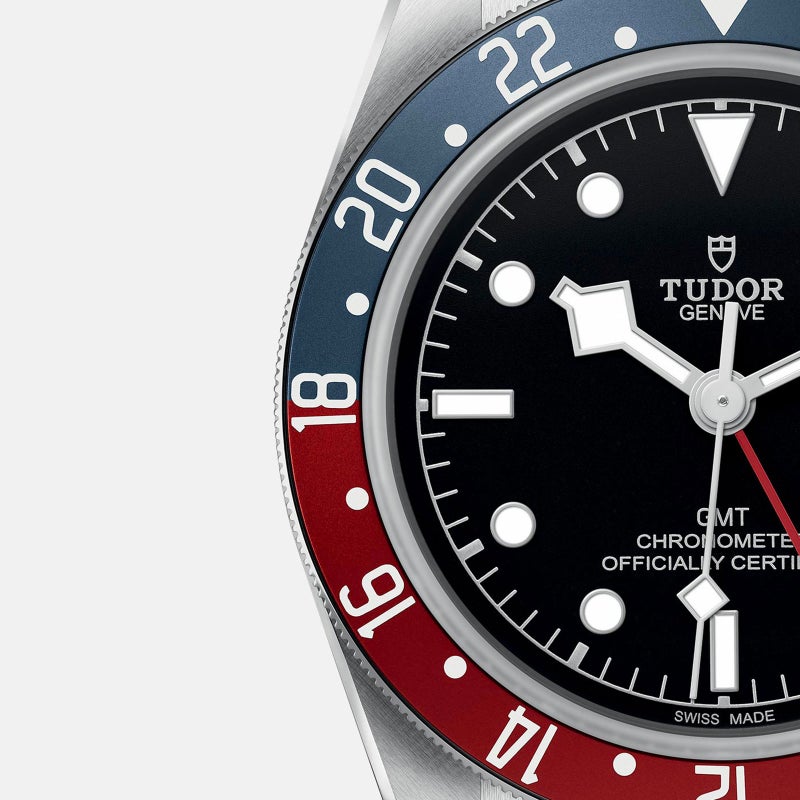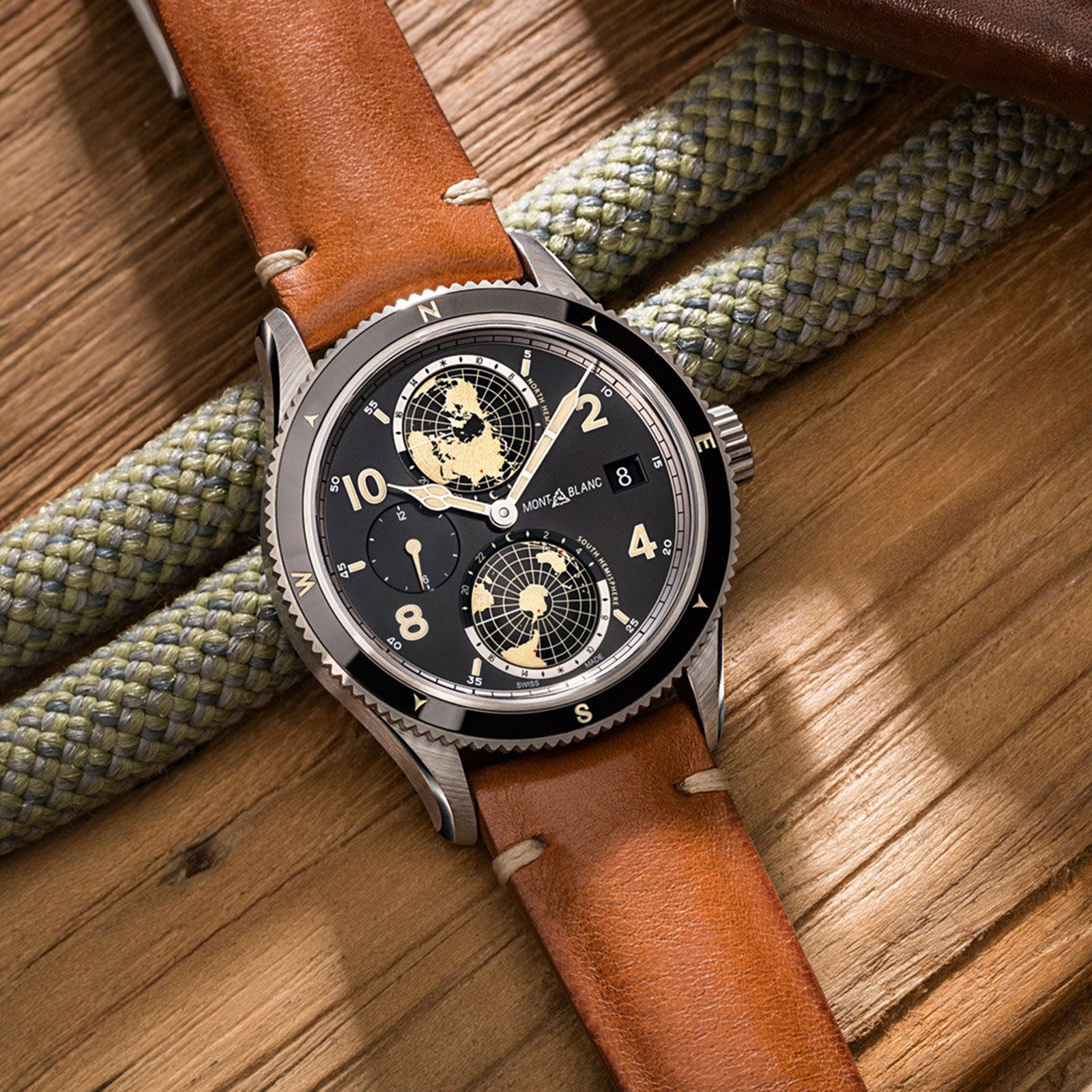Touch down at any airport in the world in a commercial jetliner, and the first thing you’ll notice is the cabin lighting up as hundreds of smartphones sync with the local time and pull down e-mail and Instagram likes after an airborne slumber. I prefer a different ritual. On arrival, I slip off my wristwatch and manually set the hands to my new local time. It feels old-fashioned and considered—a moment of calm mindfulness before the stampede to the door and baggage claim.
We travel for work, to visit family on holidays, and for events, but we also travel to escape from the grind of the day-to-day, to unplug. Smartphones have a way of undercutting this effort. They are remarkable devices, but they operate with a kind of cold precision and automation that will never match the charm of that classic explorer’s tool, the travel watch. Wearing a watch that displays the hour in multiple time zones imbues a measure of worldly sophistication and sense of adventure to its owner, while offering a measure of utility and even comfort to the homesick expatriate or jet-set backpacker.
If the past few years are any indication, travel watches are as hot as ever. In 2018, the runaway favorite of the annual Baselworld watch fair was , a nostalgic nod to a travel watch of the 1950s. This year, Zodiac’s reissued sold out a few days after its release. So what explains the enduring popularity of these timepieces in the age of smartphones? Most likely it’s the way they capture the romance of travel—that sense of wonder and possibility. They also offer constant inspiration and a reminder that it’s time to book the next trip.

Today’s travel watches, while classical in their architecture, are hardly relics. Modern iterations are dynamic and demonstrate their function up front. They’re often colorful, with bicolored bezels for indicating day or nighttime hours, or evocative, with a ring of city names that conjure up exotic locations, an atlas of possibilities on the wrist.
Their origins date back to the optimistic postwar years of the fifties, when people were ready to get out and see the world. The development of the jet engine and its adoption for commercial aviation made transcontinental travel more commonplace. It was suddenly possible to leave Paris after dinner and be in New York for breakfast, which introduced people to new languages, cuisines, adventures, and a new ailment: jet lag. It also ushered in a new type of wristwatch, one that could track multiple time zones at once. Air travel was elegant and stylish, and even though it was too expensive for most people at first, wearing a watch with multiple time zones was a visible way to project a bit of Jet Age allure.
In 1954, Pan American Airways commissioned Rolex to create a wristwatch for its long-haul pilots that could track two time zones simultaneously. The result was the GMT-Master, a watch with an additional hour hand that circled the dial once every 24 hours, pointing to an outer scale on the rotating red and blue bezel. By simply turning that bezel, the wearer could align the correct time in a second time zone to keep track of both home time and local time. The watch became a sensation and later an icon, worn by the famous and infamous, from and Magnum P.I. to Colonel Kurtz and Fidel Castro.
The Rolex model ushered in a flood of GMT watches from brands big and small. Many had names that evoked the sexiness of jet travel, such as the , , and Zodiac’s Aerospace GMT. Similarly, world-time watches, through the use of an outer ring of global city names, could tell the time in all the world’s zones at once. Glancing at such a watch during a boring meeting in Omaha might have its owner wondering about the temperature in Dhaka, what it would take to sail to South Georgia, or the diving conditions in Nouméa.
The GMT watch has evolved little since the 1950s, though new case materials have been introduced, like titanium and ceramic, movements have become more sturdy and resistant to magnetism and shock, and brands have added GMT capability to other genres of watches. Most commonly seen on pilot’s-style watches, that travel-tracking capability is also well suited to dive watches, like or the .
World-time functionality has traditionally been seen more on dress watches, but , which shows all time zones in both hemispheres, and the are proof that high functionality can still come in an elegant but rugged package.
Our connected, digital world has made booking a flight, finding a hotel room, or checking waves and wind speeds easier. What we so often lack is the soul of travel. We look at Google Maps, Yelp reviews, and TripAdvisor instead of asking a local for help or enjoying the simple thrill of getting lost in a new city. This is where the intangible pleasure of reading a book in the shade, writing in a journal, or snapping a photo can stem the digital influence. Same with setting a watch to local time upon touchdown in Marseilles, Mumbai, or Lima. Of course, one thing a travel watch can’t do is help you overcome jet lag. But then again, neither can a smartphone.


